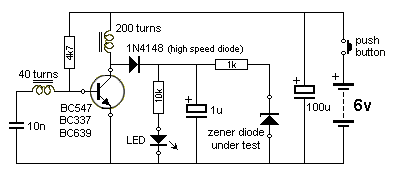Hello
We are using ten 34V CLU038 LED COBs on our mains connected product. We connect them as five lots of two-in-series. –So there are five connection wire pairs going off to them from the driver PCB.
CLU038 LED COB datasheet:
https://www.light.fi/assets/files/151210-CLU038-1206C4[Ra80-70]-DataSheet.pdf
Our assemblers unfortunately keep misconnecting them. Then when the whole luminaire is completely assembled, some or all of the five COB pairs don’t light up….
….We then have to spend ages disassembling the product so we can find out where the misconnection is and then correct it.
What we need is to test the LED COB pairs as they are assembled…to ensure they are correctly connected in.
So what we want is a 1mA current source with two probes so that we can touch the PCB pads to which the COB pairs should be connected, and check to see if the LEDs light up. Each COB pair needs about 59V to light up. We need the limitation to 1mA otherwise assembly staff may blind themselves.
We could make up a 1mA current source power supply ourselves, however, if there is something very cheap already available off-the-shelf, then we would prefer to use that. Does anyone know of such a product?
Do you agree that it’s not possible to electrocute yourself badly with 59V, with the 1mA limitation?
Also, supposing staff occasionally accidentally reverse bias the LEDs from time to time whilst testing them, do you agree that this could not cause damage to the LEDs? … because none of the individual LEDs within the COBs would get reverse biased by more than 4V, say. (the voltage would be limited to 60V)
We are using ten 34V CLU038 LED COBs on our mains connected product. We connect them as five lots of two-in-series. –So there are five connection wire pairs going off to them from the driver PCB.
CLU038 LED COB datasheet:
https://www.light.fi/assets/files/151210-CLU038-1206C4[Ra80-70]-DataSheet.pdf
Our assemblers unfortunately keep misconnecting them. Then when the whole luminaire is completely assembled, some or all of the five COB pairs don’t light up….
….We then have to spend ages disassembling the product so we can find out where the misconnection is and then correct it.
What we need is to test the LED COB pairs as they are assembled…to ensure they are correctly connected in.
So what we want is a 1mA current source with two probes so that we can touch the PCB pads to which the COB pairs should be connected, and check to see if the LEDs light up. Each COB pair needs about 59V to light up. We need the limitation to 1mA otherwise assembly staff may blind themselves.
We could make up a 1mA current source power supply ourselves, however, if there is something very cheap already available off-the-shelf, then we would prefer to use that. Does anyone know of such a product?
Do you agree that it’s not possible to electrocute yourself badly with 59V, with the 1mA limitation?
Also, supposing staff occasionally accidentally reverse bias the LEDs from time to time whilst testing them, do you agree that this could not cause damage to the LEDs? … because none of the individual LEDs within the COBs would get reverse biased by more than 4V, say. (the voltage would be limited to 60V)


